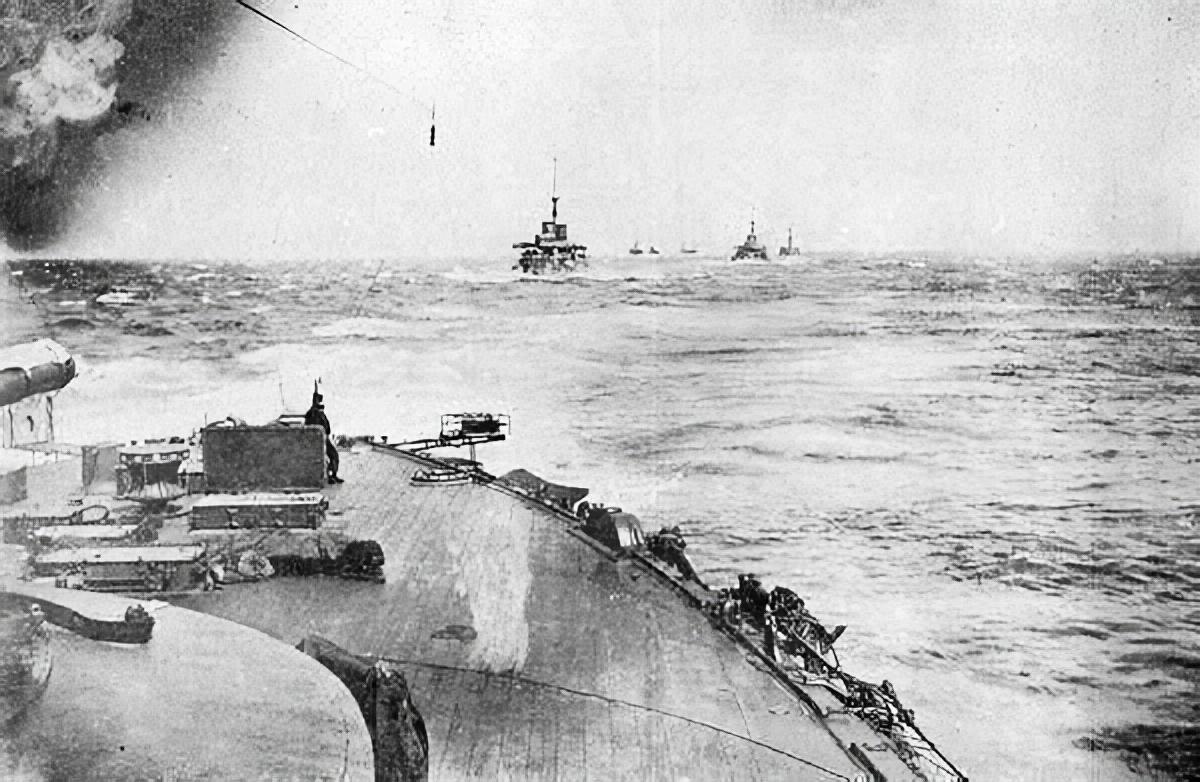
Battle of Tsushima
Tsushima Strait, JapanAfter a stopover of several weeks at the minor port of Nossi-Bé, Madagascar, that had been reluctantly allowed by neutral France in order not to jeopardize its relations with its Russian ally, the Russian Baltic fleet proceeded to Cam Ranh Bay in French Indochina passing on its way through the Singapore Strait between 7 and 10 April 1905. The fleet finally reached the Sea of Japan in May 1905. The Baltic Fleet sailed 18,000 nautical miles (33,000 km) to relieve Port Arthur only to hear the demoralizing news that Port Arthur had fallen while it was still at Madagascar. Admiral Rozhestvensky's only hope now was to reach the port of Vladivostok. There were three routes to Vladivostok, with the shortest and most direct passing through Tsushima Strait between Korea and Japan. However, this was also the most dangerous route as it passed between the Japanese home islands and the Japanese naval bases in Korea.
Admiral Tōgō was aware of Russian progress and understood that, with the fall of Port Arthur, the Second and Third Pacific squadrons would try to reach the only other Russian port in the Far East, Vladivostok. Battle plans were laid down and ships were repaired and refitted to intercept the Russian fleet. The Japanese Combined Fleet, which had originally consisted of six battleships, was now down to four battleships and one second class battleship (two had been lost to mines), but still retained its cruisers, destroyers, and torpedo boats. The Russian Second Pacific Squadron contained eight battleships, including four new battleships of the Borodino class, as well as cruisers, destroyers and other auxiliaries for a total of 38 ships.
By the end of May, the Second Pacific Squadron was on the last leg of its journey to Vladivostok, taking the shorter, riskier route between Korea and Japan, and travelling at night to avoid discovery. Unfortunately for the Russians, while in compliance with the rules of war, the two trailing hospital ships had continued to burn their lights, which were spotted by the Japanese armed merchant cruiser Shinano Maru. Wireless communication was used to inform Togo's headquarters, where the Combined Fleet was immediately ordered to sortie. Still receiving reports from scouting forces, the Japanese were able to position their fleet to "cross the T" of the Russian fleet. The Japanese engaged the Russians in the Tsushima Straits on 27–28 May 1905. The Russian fleet was virtually annihilated, losing eight battleships, numerous smaller vessels, and more than 5,000 men, while the Japanese lost three torpedo boats and 116 men. Only three Russian vessels escaped to Vladivostok, while six others were interned in neutral ports. After the Battle of Tsushima, a combined Japanese Army and Navy operation occupied Sakhalin Island to force the Russians into suing for peace.
